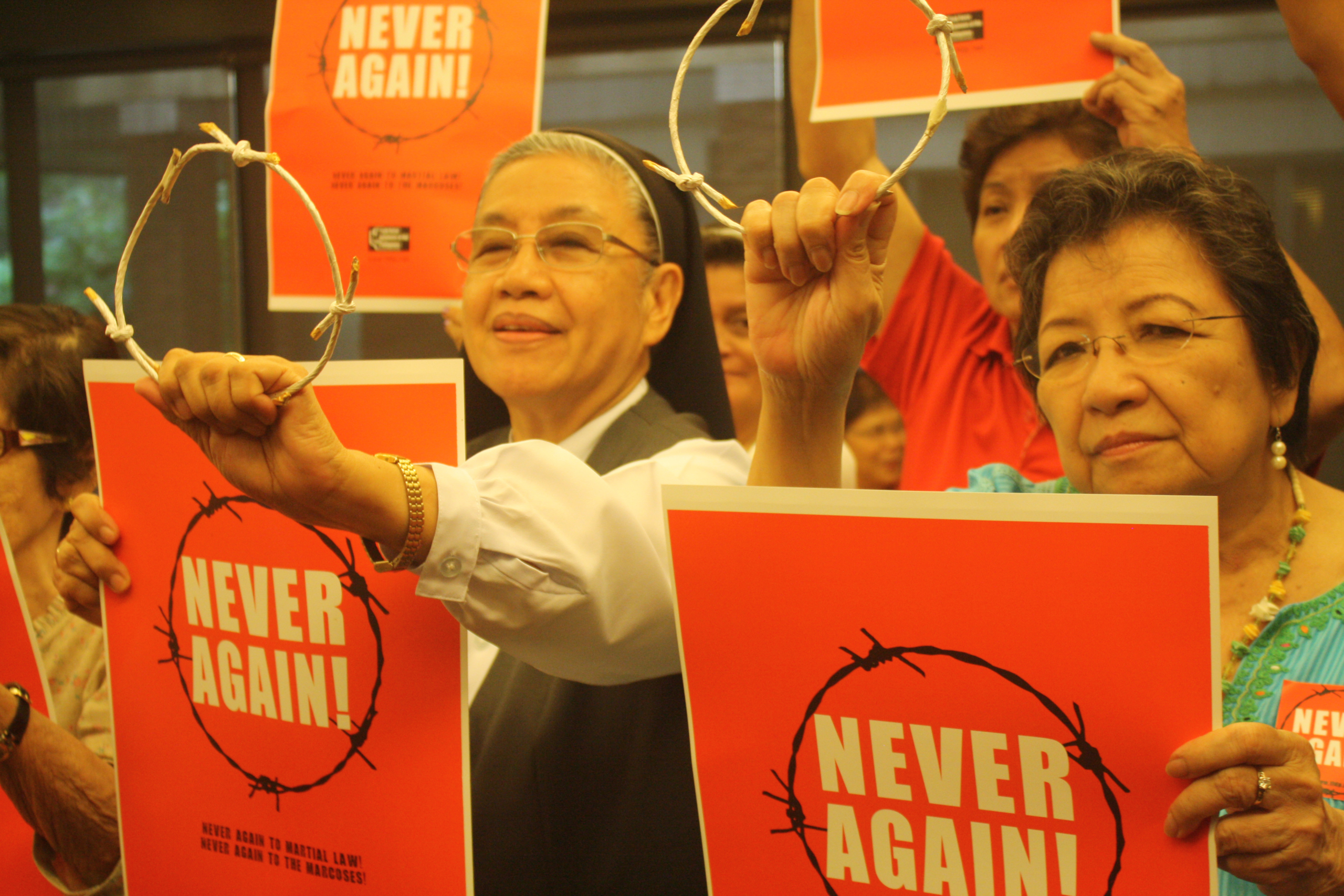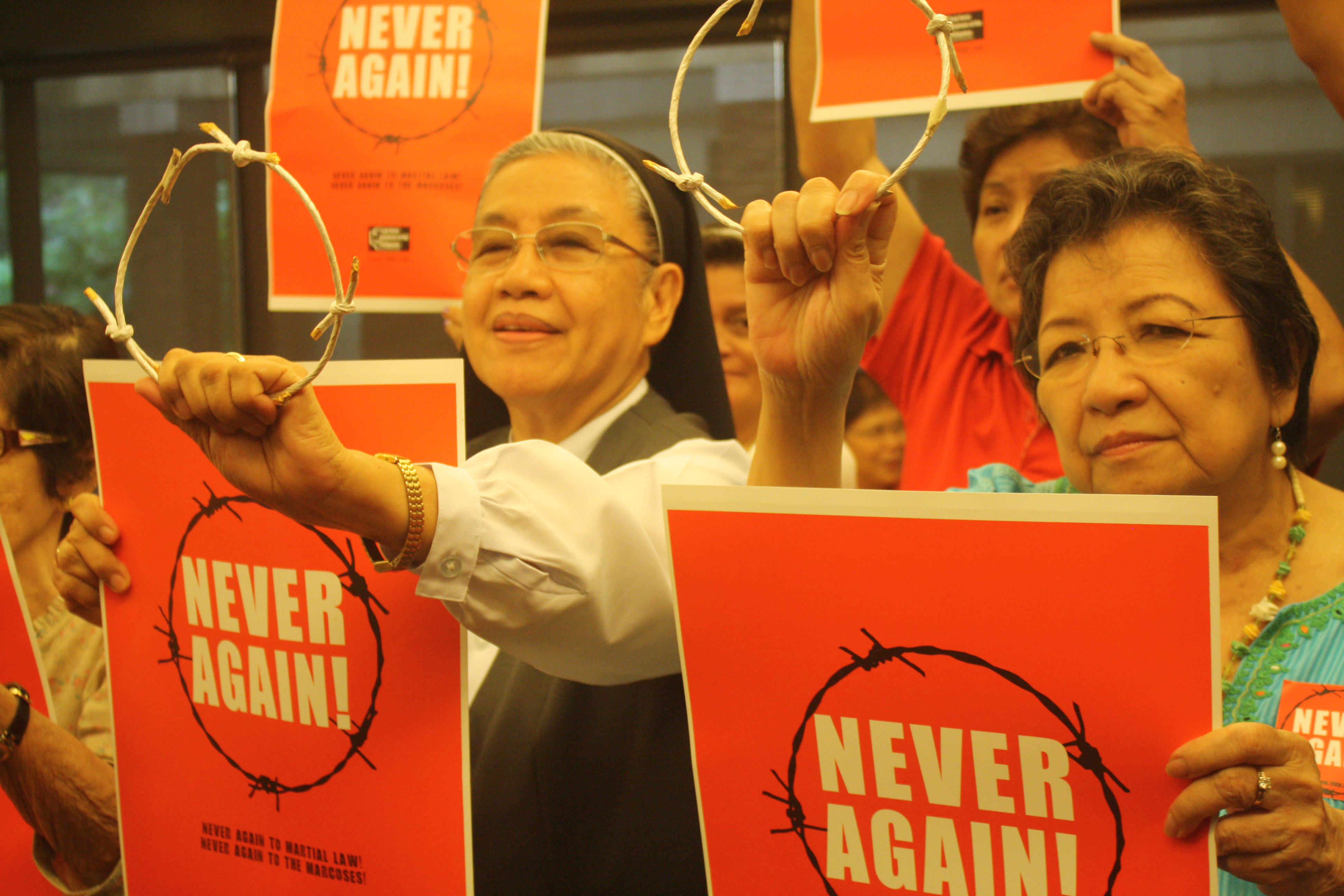The disappearance of Fr. Rudy Romano, a Redemptorist priest who was abducted by the military exactly 29 years ago today was also called to mind during the activity. Sr. Crescencia Lucero, SFIC, TFDP Co-Chairperson said however, that Fr. Rudy’s case was just among the thousands of cases of human rights violations during the Marcos regime. She added, “Thousands have been arrested and tortured. There were those who disappeared but were fortunate enough to have surfaced alive. Some were found, but already dead. Others were killed outright – salvaged, massacred – left with no chance to survive.”
During the event, TFDP also launched its virtual Museum of Courage and Resistance, otherwise known as the Martial Law Museum. It is an online version of the museum located at the TFDP office in Cubao, Quezon City. Pictures of victims of human rights violations, staunch human rights advocates, and important incidents during the dictatorship are just some of the files and memorabilia that can be found in the museum. The list of victims of martial law whose cases have been documented by TFDP, as well as those mentioned in its publications can also be accessed online.
The launching of the virtual museum, with support from the International Coalition of Sites of Conscience, is part of TFDP’s year-long 40th anniversary celebration. TFDP was established by the Association of Major Religious Superiors in the Philippines (AMRSP) during the height of martial law. “Let [the museum] be TFDP’s small contribution in the resistance against lies and deception being spread to portray the martial law years as this country’s glory days. The truth must come out. It must be told and upheld at all times,” declared Sr. Lucero.
With the enactment of the Human Rights Victims Reparation and Recognition Act of 2013, victims of human rights violations during the Marcos regime can now apply for compensation. With its documentation of more than 9,000 cases of human rights violations during martial law, TFDP committed to assist the victims in their application. The outcome of the law should be consistent with history. It should represent the stories of the victims’ suffering during the dark years of martial rule.
One story of pain and anguish is enough to break anyone’s heart; but each account of torment is also a testimony of courage. The victims’ stories put together reverberate their resolve that never again should the Marcoses be at the helm of power. Never again should martial law or any of its form happen ###




